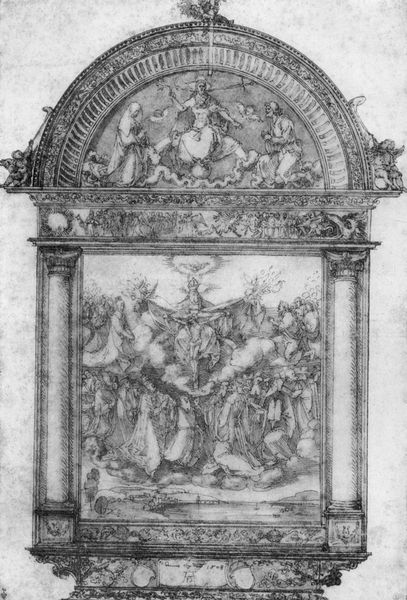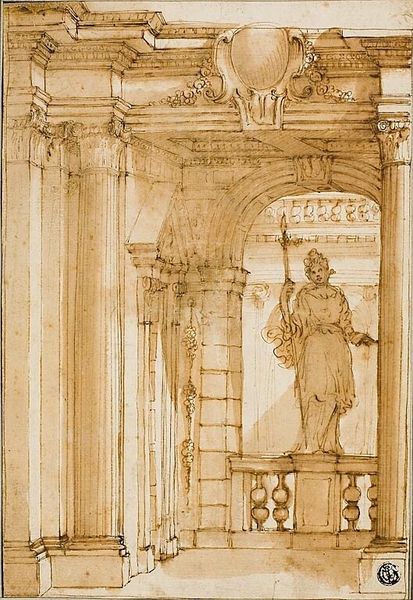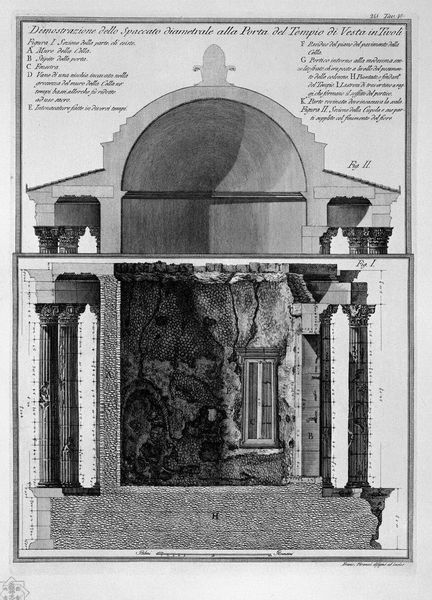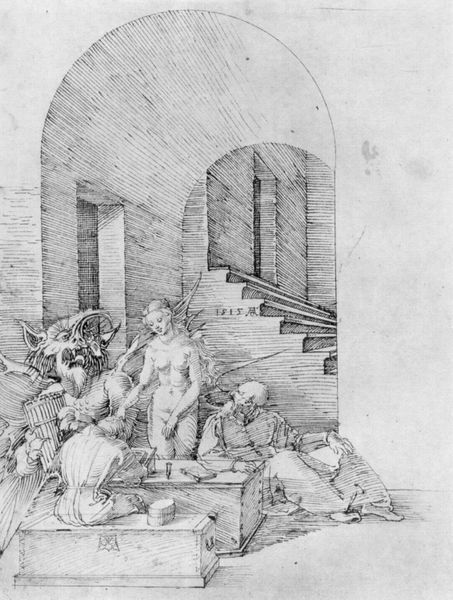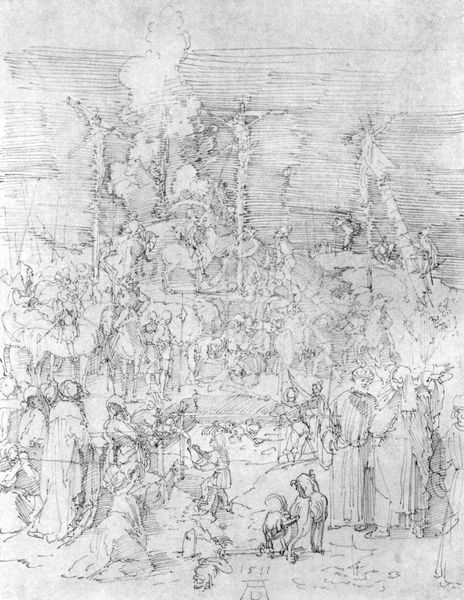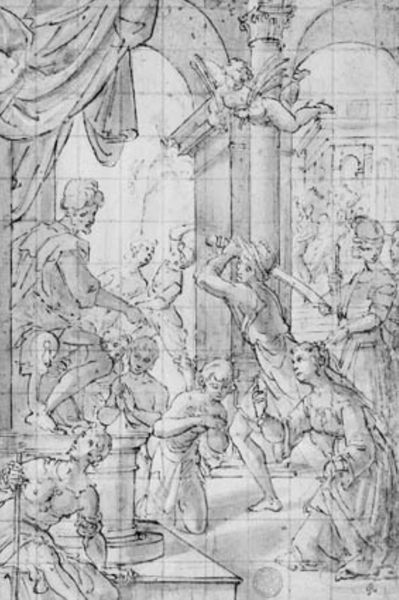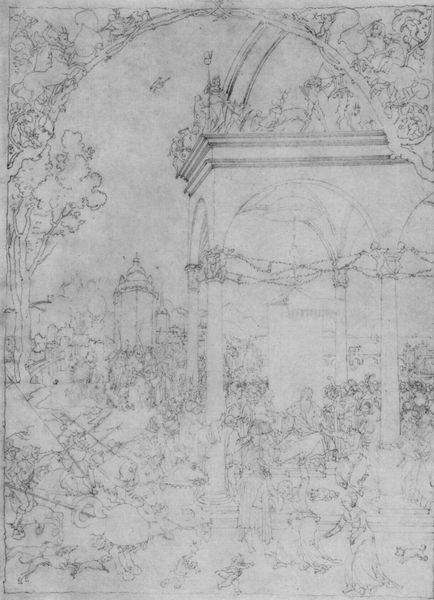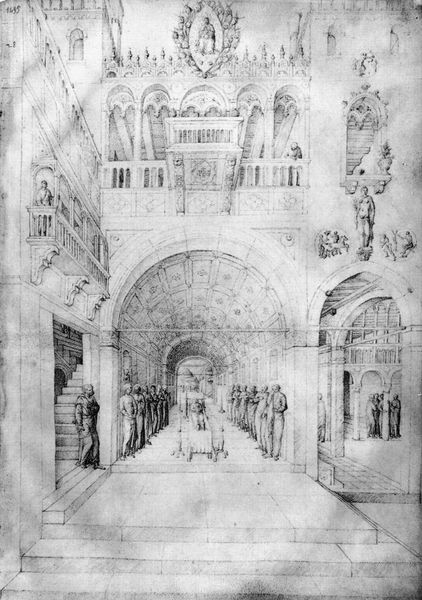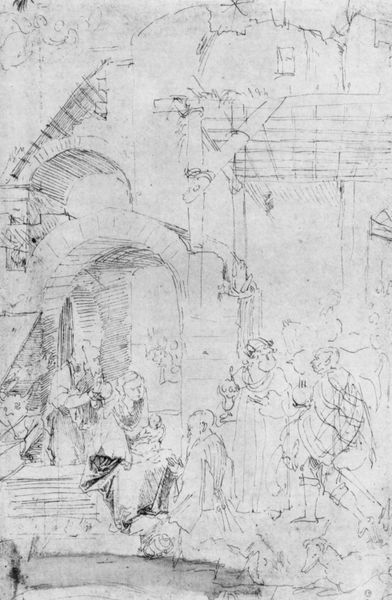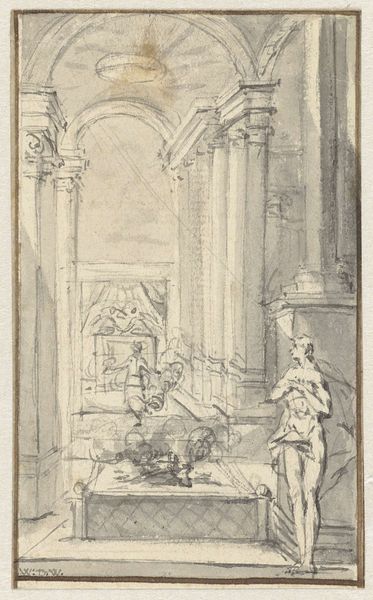
drawing, paper, pen, architecture
#
portrait
#
drawing
#
medieval
#
narrative-art
#
pencil sketch
#
landscape
#
charcoal drawing
#
figuration
#
paper
#
christianity
#
line
#
pen
#
history-painting
#
northern-renaissance
#
virgin-mary
#
architecture
#
angel
Copyright: Public domain
Editor: So, this is a drawing called "Annunciation," attributed to Albrecht Durer. It looks like ink on paper, maybe. What strikes me is the architecture; it’s so intricate, almost like a stage set. How should we interpret it? Curator: It's fascinating how Durer uses the architectural space to frame a pivotal religious moment, isn’t it? Consider how this image might have functioned within the social and religious landscape of the time. The Annunciation was a common subject. What's different here? Editor: Well, the setting feels almost domestic, less overtly religious than some depictions. Curator: Exactly. Think about the rising merchant class in Northern Europe during the Renaissance. This more intimate portrayal of the Annunciation arguably reflects a shift in religious practice. How might ordinary people have viewed the Virgin Mary through this lens? Editor: As more relatable, maybe? Less divine, more human. It changes how one might approach her, or religious imagery in general. Curator: Precisely! The drawing becomes less about unreachable divinity, more about understanding faith within the domestic sphere. Also, consider how printmaking democratized art during the Renaissance. Images like these became accessible to wider audiences. What impact might this have had on religious belief and practice? Editor: I see what you mean. Mass production shifted how individuals experience religious narratives, not just through grand church paintings but through smaller, personal images. Curator: Absolutely! Durer’s "Annunciation" becomes a tool to comprehend societal changes in religion and visual culture of his time. It represents an intimacy to be explored at an individual's pace. Editor: I never considered that the artwork served as a form of early social commentary. This has definitely deepened my appreciation of it. Curator: It's wonderful how historical context can illuminate familiar images with such striking nuance.
Comments
No comments
Be the first to comment and join the conversation on the ultimate creative platform.
